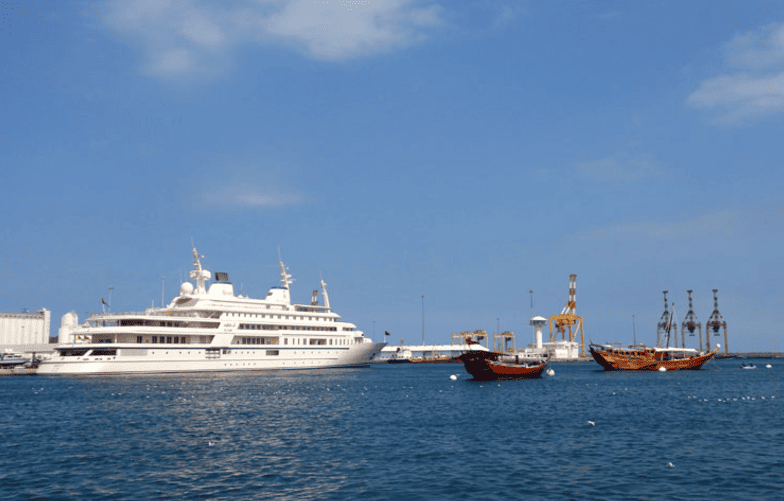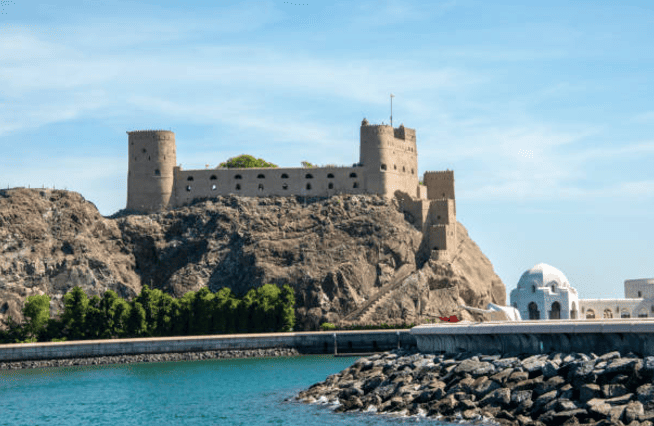Oman is not a particularly popular tourist destination for most Indonesians. It is less well-known compared to its neighboring countries, Saudi Arabia and the United Arab Emirates. Many Indonesians are even unsure about where Oman is located. Yet, in this Arabian Peninsula country, you can still experience a rich and authentic Arab culture. Interestingly, in its capital, Muscat, expatriates outnumber the native population. Oman’s diverse natural landscapes have earned it the nickname “Jewel of Arabia.”

Entering Oman via Muscat International Airport (MCT) is straightforward for Indonesians. For tourism purposes, there is no need to arrange a visa in advance. A visa on arrival is available at the airport. You only need to present your passport and pay a fee of 5 OMR (approximately 12.5 USD) for a 10-day visit. For stays longer than 10 days, the fee is 20 OMR, while a multi-entry visa costs 50 OMR and is valid for one year.
Update: Since March 21, 2018, Oman introduced a new visa policy. Tourist and short-visit visas must now be applied for online, and the visa-on-arrival (VoA) option is no longer available. However, the process is simple and accessible via the Oman e-visa website.
Update again: As of mid-December 2021, Indonesian passport holders are eligible for visa-free entry to Oman for up to 10 days.
These reasons sparked my interest in visiting Muscat, Oman. On top of that, I found relatively cheap airfare on Oman Air’s website. The desire to explore Oman grew even stronger when I secured round-trip tickets for IDR 4.5 million, departing from Singapore. The direct flight duration is approximately 5–6 hours. Of course, flights with layovers take longer.
Before my trip, I contacted a friend living in Muscat. He’s a Danish national working for an Omani government-owned company. He kindly offered me accommodation at his home and even agreed to pick me up at the airport. It was a Friday, a day off in Oman, so he was flexible about my arrival time.

At 10:00 AM, my Oman Air flight landed at Seeb International Airport, another name for Muscat International Airport. I immediately headed to the visa-on-arrival counter, which also doubles as a currency exchange booth. There were only about five people ahead of me in line, unlike the much longer queues at the visa-free and pre-arranged visa counters, mostly filled with South Asian travelers.
At the visa-on-arrival counter, I was only asked for my passport and the VoA fee. I handed over 50 USD and received change in rials. The visa wasn’t stamped in my passport but was issued as a receipt-like slip, which I presented along with my passport at immigration. The immigration officer, though stern and expressionless, didn’t ask any questions. He simply examined my passport and stamped it.
At immigration, the Arabian atmosphere was already palpable. Most of the officers were Arab men dressed in dishdasha (traditional long robes) and wearing kuma (Omani caps). However, once I stepped outside, the scene shifted dramatically. South Asians crowded the arrivals area, waiting to greet friends or family. I spotted my friend waiting for me at a café, and soon we were on our way to his house in Al-Azaiba.
Driving along Sultan Qaboos Street, named after Oman’s Sultan, the scenery was distinctly Arab. Barren, sandy hills and rows of date palms lined the road. Despite the arid landscape, colorful flowers and green parks could be seen everywhere. The heat was intense, even during the cooler winter season. In summer, temperatures can soar to 50°C. Fortunately, my friend’s house was air-conditioned, and the traditional Arabian architecture kept the interior naturally cool.
Houses in Muscat are box-shaped, painted in almost uniform shades of cream. According to my friend, this color is characteristic of Omani architecture. The style is a blend of modern Arab and European influences. To see more traditional Omani homes, one needs to travel outside Muscat, such as to Nizwa, the former capital and a historic city located about 140 kilometers away—roughly a 1.5-hour drive.

After chatting for a while, my friend took me to visit the Sultan Qaboos Grand Mosque, one of the largest mosques in the world, capable of accommodating 20,000 worshippers. Inside, it boasts a seamless handmade carpet covering an area of 4,343 square meters, once the largest of its kind globally. The mosque’s courtyard is expansive, surrounded by gardens filled with flowers and lush date palms. From the outside, it is majestic, featuring a central dome 50 meters high, four 45.5-meter minarets, and a main minaret towering 90 meters.
That evening, we visited a shopping district in Seeb, near Muscat International Airport. The area felt entirely modern, with malls featuring an Arab touch, offering Western, Japanese, and traditional Arab cuisines. This area, popularly known among expatriates as The Wave, has been rebranded as Al Mouj Muscat—Al Mouj meaning “the wave” in Arabic.
We dined at Shakespeare and Co Café-Restaurant, which overlooks the marina. Many expatriates frequent the area, and attire is entirely free, with no obligation to wear a hijab or cover up. I saw Filipino workers wearing short skirts, but Omanis retained their cultural identity. Women wore abayas and hijabs, while men donned traditional dishdasha robes.
Later, we moved to Chez Sushi Oman, a Japanese restaurant hosting a Halloween celebration. Expatriates, mostly Westerners, freely celebrated the occasion. Children and teens paraded along the boulevard with spooky face paint. After the parade, they wandered around in groups, and none of the Omanis seemed disturbed by the festivities.
The next day, we visited Al Alam Palace, not far from Riyam Park and the Old Watch Tower in Muttrah. In Arabic, Al Alam means “flag.” It is one of six palaces owned by the Sultanate of Oman, built by Imam Sultan bin Ahmed, the seventh great-grandfather of Sultan Qaboos. The palace is used exclusively for ceremonial events and state guests.
Surrounding the palace are the Mirani and Al Jalali Forts, built by the Portuguese in the 16th century. Visitors cannot enter the Al Alam Palace but can approach its gates and take photos. The palace’s façade, painted blue and gold, is simple yet elegant. Inside, it features state guest villas equipped with swimming pools, spa facilities, and gardens.
After visiting the palace, I walked alone to Azaiba Beach, just 300 meters from my friend’s house. The beach stretches long and flat, with black sand and waves crashing in from the Gulf of Oman. It was bustling in the evening, but the atmosphere didn’t feel particularly Arab. Most visitors were South Asians, making the experience reminiscent of India or Bangladesh.
On another day, we explored the old city of Muscat, encompassing Ruwi and Muttrah. Ruwi is a modern business district, while Muttrah is the hub of Muscat’s tourism and port area. Here, we visited the Muttrah Souk, a traditional market selling various souvenirs, carpets, and Omani handicrafts. Many of the vendors were South Asians, and European tourists were abundant, arriving in tour buses due to the lack of public transport. Only taxis are available.
Across from the souk lies the blue sea framed by rocky hills. Both modern and traditional boats pass by, creating a stunning view. Not far from the souk stands the Muttrah Fort, perched atop a rocky hill. Built by the Portuguese in the 16th century for military purposes, it later served as a prison before becoming a tourist site. From the fort’s peak, you can see the souk and old homes surrounded by ancient walls.
Stretching along the bay is the Muttrah Corniche, a 3-kilometer promenade adorned with fountains, historic parks, statues, and gazebos. The waterfront view is breathtaking, ideal for walking or relaxing. At the end of the Corniche stands the Old Watch Tower, perched atop a pointed rocky hill. Reaching it involves climbing steep stairs. While my friend hesitated, I carefully made my way to the top.
The tower is cylindrical, with a thick wooden door at its entrance. Inside, there’s a cannon once used to monitor port activities. The view from the tower is stunning, especially during sunset.
From the tower, you can see old Muscat, the back of Al Alam Palace, the Port of Oman, green parks, and the Riyam Monument perched on a rocky hill. The Riyam Monument resembles a cloche (food cover) or even a futuristic spaceship. I stayed at the tower until the sun, glowing round and fiery, sank into the western horizon.
